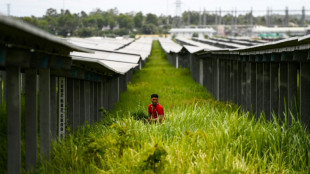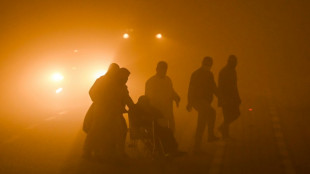Flooded roads, power outages in US hamper storm rescue efforts
Rescuers battled on Sunday to reach people in need of aid in the southeastern United States following devastating storm Helene, with flooded roads, power outages and other hazards impeding progress, authorities said.
The storm left a swathe of damage across several states, including Florida, Georgia, North Carolina, South Carolina and Tennessee, with its high winds and torrential rain leaving some towns looking as if they had been wiped off the map.
"Search and rescue efforts by local, state and federal responders, are ongoing," said Lori Moore-Merrell of the Federal Emergency Management Agency.
"There's been currently significant road closures due to standing water and hazards that are impeding response efforts, including power restoration, debris clearance, search and rescue and damage assessment."
At least 64 people were killed across five states, according to a consolidated toll, with more than 2.7 million households without power on Sunday.
Of those who died, 24 were in South Carolina, 17 in Georgia, 11 in Florida, 11 in North Carolina and one in Virginia, according to local authorities and media tallied by AFP.
There were still three active flash flood emergencies across western North Carolina on Sunday, Ken Graham, the director of the National Weather Service, said, adding that they were due to the risk of dam failures.
The weather was expected to ease in the affected areas by around Tuesday, he said.
Thousands of people continued to seek assistance in shelters run by the American Red Cross, organization official Jennifer Pipa said.
- 'Extremely dangerous' -
Helene blew into Florida's northern Gulf shore as a huge Category Four hurricane with winds of 140 miles (225 kilometers) per hour. Even as it weakened into a post-tropical cyclone, it wreaked havoc.
North Carolina saw some of the worst of the flooding, with Governor Roy Cooper on Sunday saying rescuers were being forced to airlift supplies in some areas due to damaged or flooded roads.
"Because it's so difficult to get trucks in by land, yesterday, we began airlifting supplies, including food and water, into the region," he said.
William Ray, director of the state's emergency management department, warned that conditions were still extremely dangerous.
Hundreds of roads across the region remained closed, with several bridges washed away by floodwaters.
Four major interstate highways were closed across North Carolina and Tennessee, with "multiple" bridges still out, said Kristin White of the US Department of Transportation.
Georgia, North Carolina and South Carolina each had more than 100 road closures, she added.
In the Georgia city of Valdosta, the storm ripped the roofs off buildings, and left road intersections a tangle of felled utility poles and trees.
"The wind started really hitting, like, felt branches and pieces of the roof hitting the side of the building and hitting the windows," said Valdosta resident Steven Mauro.
"And then we were looking out and then literally this whole street, just everything went black."
On Sunday, Matt Targuagno of the US Department of Energy said crews were working to restore power to all customers, but that it was "a complex, multi-day response."
S.Dennehy--NG



